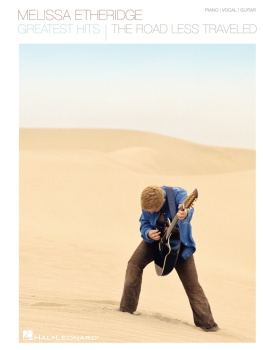The Words and Music of Melissa Etheridge
James E. Perone

Copyright 2014 by James E. Perone
All rights reserved. No part of this publication may be reproduced, stored in a retrieval system, or transmitted, in any form or by any means, electronic, mechanical, photocopying, recording, or otherwise, except for the inclusion of brief quotations in a review, without prior permission in writing from the publisher.
Library of Congress Cataloging-in-Publication Data
Perone, James E.
The words and music of Melissa Etheridge / James E. Perone.
pages cm. (The Praeger singer-songwriter collection)
Includes bibliographical references and index.
ISBN 9781440830075 (hardback) ISBN 9781440830082 (ebook)
1. Etheridge, MelissaCriticism and interpretation. I. Title.
ML420.E88P47 2014
782.42166092dc23 2013044660
ISBN: 9781440830075
EISBN: 9781440830082
18 17 16 15 14 1 2 3 4 5
This book is also available on the World Wide Web as an eBook. 
Visit www.abc-clio.com for details.
Praeger
An Imprint of ABC-CLIO, LLC
ABC-CLIO, LLC
130 Cremona Drive, P.O. Box 1911
Santa Barbara, California 93116-1911
This book is printed on acid-free paper
Manufactured in the United States of America
Recent Titles in The Praeger Singer-Songwriter Collection
The Words and Music of Neil Young
Ken Bielen
The Words and Music of Ice Cube
Gail Hilson Woldu
The Words and Music of Tom Waits
Corinne Kessel
The Words and Music of Sting
Christopher Gable
The Words and Music of Van Morrison
Erik Hage
The Words and Music of Joni Mitchell
James Bennighof
The Words and Music of George Harrison
Ian Inglis
The Words and Music of Paul McCartney: The Solo Years
Vincent P. Benitez
The Words and Music of Jimi Hendrix
David Moskowitz
The Words and Music of Billy Joel
Ken Bielen
The Words and Music of Dolly Parton: Getting to Know Country's Iron Butterfly
Nancy Cardwell
The Album: A Guide to Pop Music's Most Provocative, Influential, and Important Creations, 4 volumes
James E. Perone, Editor
Contents
, by James E. Perone
Series Foreword
Although the term singer-songwriter might most frequently be associated with a cadre of musicians of the early 1970s such as Paul Simon, James Taylor, Carly Simon, Joni Mitchell, Cat Stevens, and Carole King, the Praeger Singer-Songwriter Collection defines singer-songwriters more broadly, in terms of both style and time period. The series includes volumes on musicians who have been active from approximately the 1960s through the present. Musicians who write and record in folk, rock, soul, hip-hop, country, and various hybrids of these styles are represented. Therefore some of the early 1970s introspective singer-songwriters named here will be included, but not exclusively.
What do the individuals included in this series have in common? Some have never collaborated as writers, whereas others have; but all have written and recorded commercially successful and/or historically important music and lyrics at some point in their careers.
The authors who contribute to the series also exhibit diversity. Some are scholars who are trained primarily as musicians, whereas others have such areas of specialization such as American studies, history, sociology, popular culture studies, literature, and rhetoric. The authors share a high level of scholarship, accessibility in their writing, and a true insight into the work of the artists they study. The authors are also focused on the output of their subjects and how it relates to their subjects biography and the society around them; however, biography in and of itself is not a major focus of the books in this series.
Given the diversity of the musicians who are the subject of books in this series, and given the diversity of viewpoint of the authors, volumes in the series differ from book to book. All, however, are organized chronologically around the compositions and recorded performances of their subjects. All of the books in the series should also serve as listeners guides to the music of their subjects, making them companions to the artists recorded output.
James E. Perone
Series Editor
Acknowledgments
As has been the case for all of the writing that I have done for Praeger Publishers, I am indebted to the Praeger acquisitions and editorial staff, as well as to the copyeditors with whom they contract. I am grateful that this well-oiled machine raises questions that I had not considered, provides such a keen eye to help find every uncrossed t and undotted i, and manages to make the entire process as smooth as possible.
Thank you to my University of Mount Union colleagues Dr. Susan Haddox (Philosophy and Religious Studies), Dr. Kathleen Piker-King (Sociology), Dr. Andrew Price (English and Gender Studies), and Dr. Kevin Meyer (Psychology), all of whom made helpful suggestions for resources in the area of LGBT studies from the perspectives of their respective academic disciplines.
I would especially like to thank my wife, Karen, for encouraging me throughout the writing, editing, and indexing process over the course of this (and every previous) project; I could not have done it without your encouragement and support.
Despite all of the help of these individuals and organizations, there are bound to be some errors, some controversial interpretations of the words and music of Melissa Etheridge; they are all mine.
Introduction
American singer-songwriter-guitarist (and occasional pianist) Melissa Etheridge was born in Leavenworth, Kansas, on May 29, 1961. According to Etheridge, her older sister, Jennifer, physically and sexually abused Etheridge for years, beginning at approximately age three or four.
After graduating from Leavenworth High School, Etheridge moved to Boston, Massachusetts, to attend the Berklee College of Music, one of the most highly respected institutions in higher education for study in jazz, popular, and commercial music. During her time at Berklee, Etheridge began playing as a solo act at clubs around Boston. Sensing that the structured curriculum at Berklee was not necessary for her work as a singer-songwriter, Etheridge dropped out of college. After spending a brief period back home in Kansas, she moved to California to try to make it in the commercial music industry.
Etheridges first major inroads in the industry were forged in 1987 when manager Bill Leopold signed her. Under Leopolds guidance, Etheridge undertook an increasingly prestigious round of appearances in the Los Angeles and Long Beach, California, areas. Because of the quality of Etheridges songs and her success as a live solo artist, several major record companies attempted to sign her. Eventually, though, she signed with Island Records, with which she continues to record into the second decade of the twenty-first century.
Although producer Jim Gaines initially conceived of Etheridges self-titled debut album as a pop album, Island Records founder Chris Blackwell intervened and directed that Etheridge rerecord the songs in a style suggested by a photo that had been taken in a shoot for the albums cover. The passion and edgy posture that blends ecstasy and torture that are embodied in that photo resulted in












